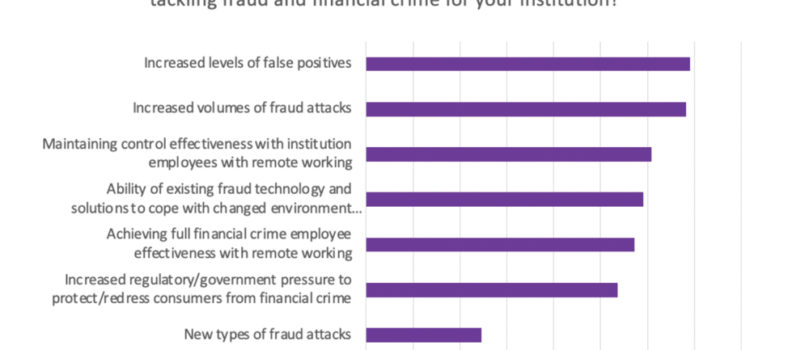 By Amol Dhargalkar
By Amol Dhargalkar
To succeed in the 2021 marketplace, corporate treasurers must rethink their financial risk management objectives, strategies, and policies while addressing their team’s changing role within the organization. Recognizing these five trends can help treasurers prepare for success in the year ahead.
Corporate treasury teams face a dramatically different landscape in 2021. We begin our year in the shadow of a global pandemic, amid a tumultuous political climate, and facing volatility across asset classes — all while still working from home for many. The amorphous “new normal” hits organizations on all fronts, impacting forecast certainty, capital structure, and organizational priorities. Even as vaccines and fiscal stimulus spark hope, shifting buying patterns and economic recovery efforts continue to influence both business demand and financial risk profiles.
To address these impacts and succeed in the new marketplace, you may need to rethink not only your financial risk management objectives, strategies, and policies but your treasury team’s ever-changing role within the organization. Fortunately, these challenges also present opportunities to position your team and your business for stability and success in the long term. Focusing on applying lessons learned in 2020 to the following five emerging trends can help you prepare for managing financial risk in the year ahead.
TREND 1: Reviewing risk policies and practices to ensure they withstand market shocks
One of the key trends we’ve seen at Chatham is clients reviewing and adjusting their risk policies and practices to integrate organizational changes, apply lessons learned in 2020, and build stronger programs for the future. Just as “earthquake-proof” buildings are designed on a flexible foundation that absorbs seismic shifts, these treasury leaders aim to develop hedging policies that maintain controls while providing the latitude to respond effectively to unforeseen events. This might include re-writing policy to align with new objectives, updating hedge accounting treatment to allow for greater forecast flexibility, and wholesale revamps of hedging approaches as a result of market and business changes.
TREND 2: Rethinking FX programs to address volatility and use resources efficiently
An effective hedging program must balance risk reduction and efficient use of treasury resources — whether personnel, budget, or technology spend. We’re seeing clients conducting reviews and analyses to assess whether their FX programs continue to produce risk-reduction benefits that justify the program’s complexity and operational costs. Senior executives at companies are increasingly asking the question, “How can we do this more efficiently?” and proactive treasury teams are no longer waiting for questions from the board or senior management to engage in benchmarking and reviews of their existing programs. The objective is to identify opportunities to maximize program return, such as hedging the most impactful currencies, achieving data-driven programs, increasing operational efficiencies, streamlining accounting workflows, and communicating meaningful and dynamic reporting to stakeholders.
TREND 3: Transforming treasury through automation
Whether fuelled by the need for actionable data, the mandate to leverage a lean workforce, or the realities of a continued work-from-home environment, the steady movement toward treasury automation accelerated significantly in 2020. We saw clients integrate and automate their financial risk management programs from gathering exposures through hedge accounting, streamlining FX balance sheet, FX cash flow, interest rate hedging, commodity hedging, and hedge accounting programs. Despite a challenging year, many companies increased their budget capacity to take on meaningful process changes to re-imagine their workflows, strategically employ technology, and utilize enhanced management reporting to improve controls, lower costs, and enable data-driven decision making.
TREND 4: Preparing for the LIBOR transition
While it seems as though LIBOR’s demise has been discussed ad nauseam for years, 2021 brings very real changes for corporates. With the ISDA-driven IBOR fallbacks protocol officially underway, and Topic 848 relief available for a limited time, many corporate finance and treasury teams are now actively preparing their organizations for the LIBOR transition. In addition, recent pronouncements of certain LIBOR tenors living on through the end of 2021 open questions around longer-dated debt and derivatives. Corporates are already starting to execute non-LIBOR based derivatives, and in 2021 we expect to see clients gaining visibility into the mechanics of SOFR-based trades, preparing IBOR Fallbacks Protocol action plans, and weighing the impacts of electing ASC 848 on their hedge accounting treatment.
TREND 5: Treasury’s role in managing commodity risk
Commodity prices have retained their high volatility status throughout the past year, and with markets pricing in a robust recovery punctuated by concerns over COVID variants and vaccine distribution, we expect such volatility to remain a fact in 2021. Treasury teams are increasingly engaged with procurement to identify ways in which financial hedging can blend with supplier contracts and purchase agreements in order to provide greater forecasting certainty for corporates. Operational hedging programs for commodities will often include a wider range of products and strategies than operational FX programs to address the physical nature of the asset class as well as program objectives that may require a more dynamic approach. Market conditions have triggered many commodity hedgers to re-evaluate product selection and alignment with risk management objectives.
COVID-19 has had far-reaching impacts to virtually every industry and business sector, which forced treasury teams to keep pace with a rapidly changing landscape and the risk profiles and strategies necessary to manage unprecedented interest rate, FX, and commodity volatility. As treasury organizations navigated these uncharted waters, many endured by establishing new risk management practices, evaluating market triggers to adjust current practices, and incorporating flexibility in the face of business uncertainty. As the pandemic moves toward the rear-view mirror, savvy leaders will apply lessons learned during the pandemic to develop strong, flexible programs built to withstand the next black swan event.
Amol Dhargalkar is Managing Partner, Board Member, Global Head of Corporates, Chatham Financial.




